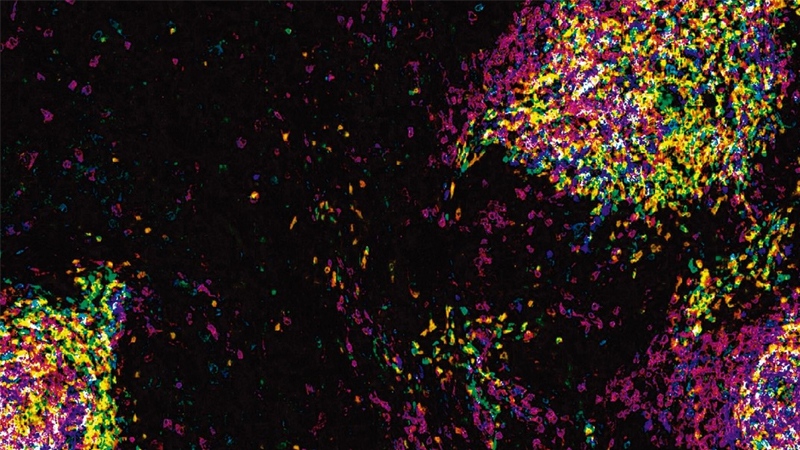
Immunotherapies such as checkpoint inhibitors that enhance the body’s natural ability to fight cancer have been only minimally successful in treating sarcomas — rare cancers that grow in the soft tissues and bones. In a new study, Johns Hopkins Kimmel Cancer Center researchers have teased out the tumor microenvironment in these cancers to look for reasons why.
The work was published online on June 16, 2020, in the journal Clinical Cancer Research.
Studying human samples from two types of soft tissue cancers — rhabdomyosarcomas and undifferentiated pleomorphic sarcomas (UPS) — with different genetic underpinnings and responses to immunotherapy, investigators discovered that both tumor types were ripe with tumor-associated macrophages (TAMs). Heavily involved in promoting tumor initiation and growth, TAMs hamper the proper immune reaction against tumors. Additionally, both sarcomas had similar amounts of CD8+ T lymphocytes (CD 8+ T cells, also known as “killer T cells”), immune system cells that protect the body from infection and are believed to be among the front-line soldiers in the fight against cancers.
In their study, the researchers discovered that where the CD8+ T cells congregated and how their antitumor functions were impeded by TAMs differed in the two sarcomas.
In UPS, the researchers found that the tumors themselves were filled with TAMs and CD8+ T cells. With constant stimulation by tumor antigens, CD8+ cells produce large amounts of PD-1, a protein that eventually exhausts the T cell population. When this happens, the researchers suggest, and TAMs control the environment, normal T cell activity against the cancer is suppressed.
In rhabdomyosarcomas, the researchers found CD8+T cells only within tiny aggregates of immune cells called tertiary lymphoid structures (TLSs). TLSs are known to play a major role in initiating antitumor immune responses, helping the immune system recognize cancer cells as targets.
“Our working theory is that TAMs around the TLSs restrain them from deploying the T cells they contain into the surrounding tumor tissue,” says senior study author and pediatric hematologist-oncologist Nicolas Llosa, M.D., assistant professor of oncology at the Johns Hopkins University School of Medicine.
Llosa says the study findings suggest that for UPS and rhabdomyosarcoma, targeting and shutting down TAMs and in turn, restoring the activity of fully potent, cancer-fighting T cells on tumors, may be the key to achieving a positive outcome against this disease.
“We are really trying to learn as much as we can about the granular details of immune cell interactions in sarcomas,” Llosa says. “This is a rare subset of patients who are in desperate need of new treatments. The therapies for sarcomas have not changed in the past four decades.”
Immunotherapy has had limited success in treating some sarcomas, he says, but no effect so far for UPS and rhabdomyosarcoma.
“The basis of successful immunotherapy lies in the ability of the immune system to recognize cancer as foreign and attack, and is dependent on genetics, host and environmental factors, and makeup of the tumor microenvironment,” says Llosa. “We need to understand the immune niche that sustains these tumors and how it supports tolerance, so we can determine what drug targets could be used to help mount a better response.”
